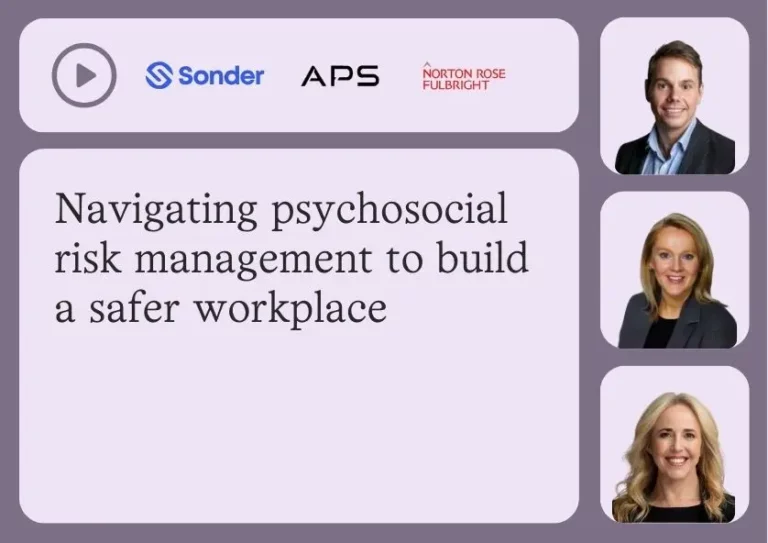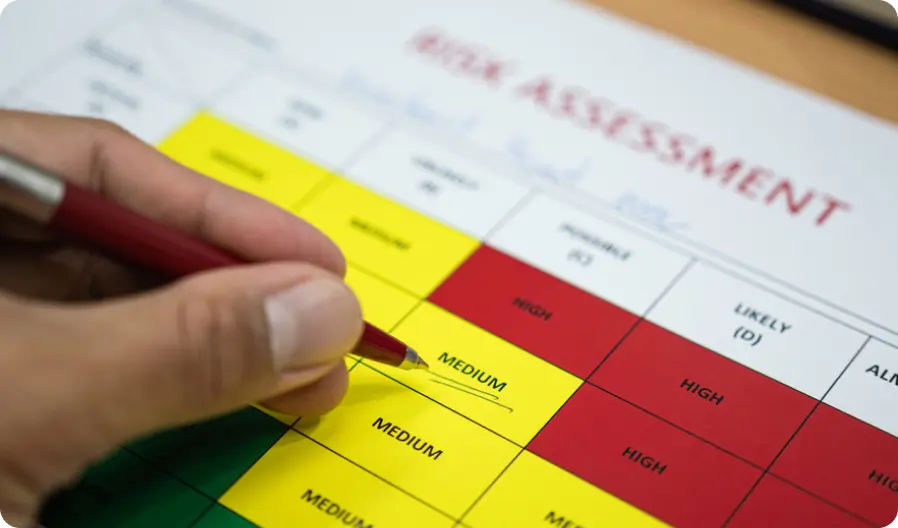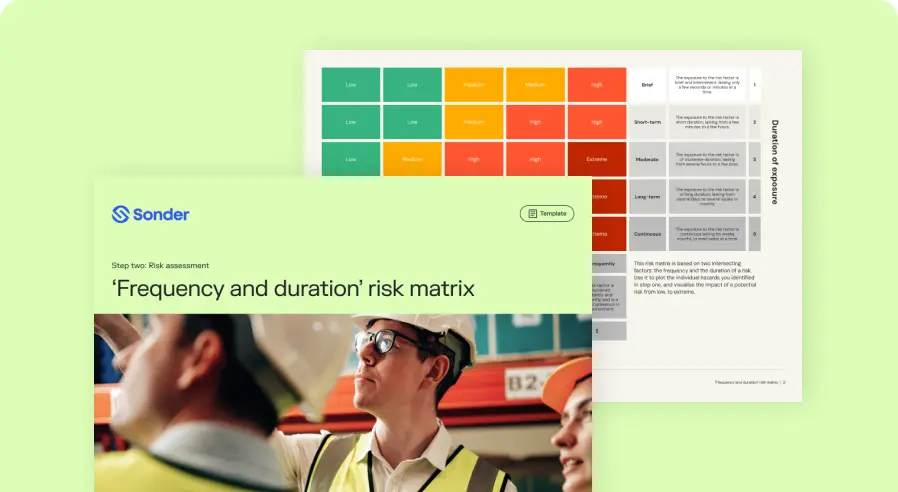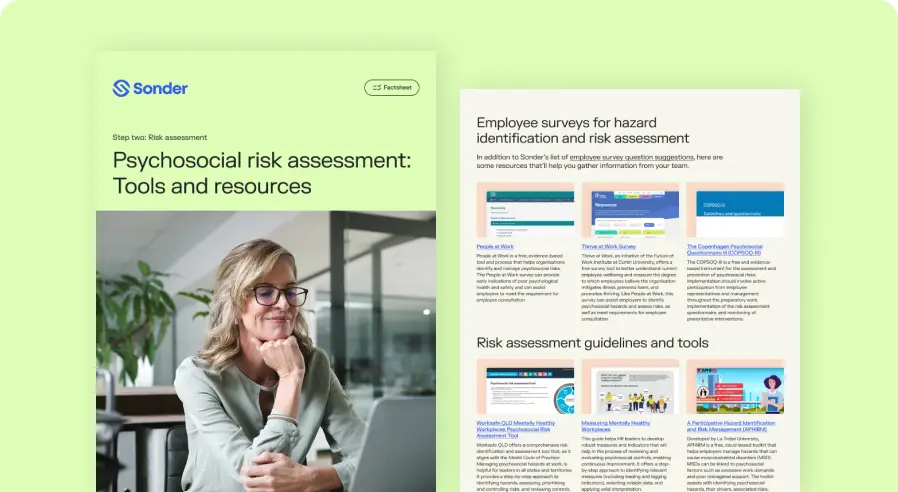

Download our risk management templates
Assessing the psychosocial risk
After you have identified psychosocial hazards within your organisation, the next step is to assess the associated risks.
In doing so, it’s important to consider the severity and likelihood of harm from exposure to these habits, as well as their frequency and duration, to help you build a complete picture.


Understanding the variance in risk
In this step of the process, you’ll need to invest the time to get into the details. The same hazards will have different impacts in different areas of your business.
Understanding these subtleties will set you up for success and help you build the most effective risk controls in step three.
“It’s important to have an objective approach to assessing where psychosocial risk arises in an organisation from a data perspective rather than assuming where risks arise. From there, organisations need to apply a risk register using a systematic approach to wherever that risk arises, based on the data.”

Health and Safety Specialist and Partner at Norton Rose Fulbright







